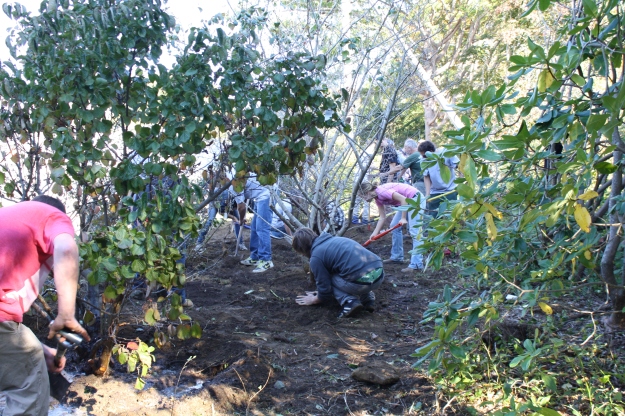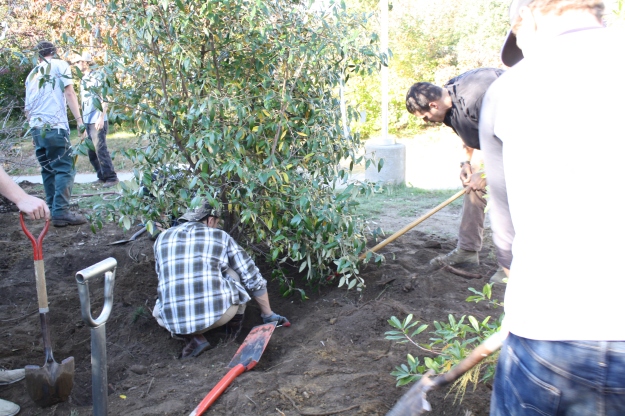Yesterday, Dr. Brian Maynard’s Landscape Management and Arboriculture class had a great day of hands-on experience. The students planted six very large flowering shrubs in the Botanical Gardens. The area had been shady before removing some trees to let more sunlight into the greenhouses (“Here Comes Sunshine“). We dug out the shade-loving plants to go elsewhere and were left with an open, mostly sunny space.
Seven really large shrubs — a few Viburnums, an Ilex verticillata, and an unusual plant called Cyrilla racemiflora were brought up to the Botanical Gardens from East Farm. URI’s L&G helped with a bit of prep and then the fun began.
After the class had planted and watered in the shrubs, they continued: half the students raked up the area, and half helped me dig peonies out of another garden. Then the peonies were planted near the outer (sunnier) edges of the bed along with Siberian irises. When everything was watered in and cleaned up, they were kind enough to pose for a group picture.
I was impressed by their hard work and how everyone pitched in — no standing around! I am really looking forward to seeing this beautiful new area bloom in the spring. Thanks, everyone.
















